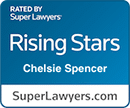Continuing with our blog series covering federal trademarks, today we will be discussing trade dress. Trade dress is commonly defined as the total image or overall appearance of a product. Protectable trade dress may include design features such as color or color combinations, graphics, size, shape, and texture, among others. It is the combination of the unique design features which constitute trade dress and make it a protectable trademark.
Trade Dress Examples
Product packaging and product design can constitute trade dress. Product packaging generally refers to the overall combination and arrangement of the design elements that make up the product’s packaging, while product design refers to the product’s shape, configuration, or other product design feature. Have you ever noticed that all Coca Cola glass bottles have the same shape and overall product design? That’s trade dress. Trade dress protection has even been extended to the shapes of buildings.
Trade dress protection extends beyond product design features. It can also include exterior and interior design and architectural features of stores and buildings. If you have ever stopped for gas at a Texaco or Chevron gas station, you may have noticed that the stations all look the same, i.e. they have the same overall appearance and total image. This is the very definition of trade dress. Both Texaco and Chevron hold federal registrations for their stations’ respective trade dress. For example, Texaco has registered the configuration of a building with “a red and black fascia and a T-star in a circle thereon, [with] the remainder of the building painted silver and gray.”
Restaurants often seek trade dress protection to protect atmosphere and design features that make the restaurant recognizable to many consumers. Taco Cabana’s trade dress includes “a festive eating atmosphere having interior dining and patio areas decorated with artifacts, bright colors, paintings and murals. The patio includes interior and exterior areas with the interior patio capable of being sealed off from the outside patio by overhead garage doors. The stepped exterior of the building is a festive and vivid color scheme using top border paint and neon stripes. Bright awnings and umbrellas continue the theme.” Fuddruckers and Potbelly are also examples of national chain restaurants which have sought and obtained trade dress protection.
Apple recently acquired trademark registration for the trade dress of its store interior, namely “the design and layout of a retail store.” The trade dress consists of the clear glass storefront, rectangular recessed lighting units traversing the length of the store, multi-tiered shelving along the side wall, and the oblong table with stools located at the back of the store, among other items. See U.S. Reg. No. 4,277,914.
Trade Dress Registration
Trade dress is eligible for registration with the United States Patent and Trademark Office. Trade dress can be registered on either the Principal Register or the Supplemental Register. Although registration of trade dress is not required to bring an actionable claim for trade dress infringement, registration on the Principal Register does provide constructive notice to others that you own the trade dress. A federal trademark registration on the Principal Register is also prima facie evidence that the trade dress is a valid and distinctive trademark.
However, trade dress is not registerable or actionable if it is deemed functional. A product feature is functional if it is “essential to the use or purpose of the article or [if it] affects the cost or quality of the article.” Inwood Laboratories, Inc. v. Ives Laboratories, Inc., 456 U.S. 844 (1982). For example, Gibson guitars once sought to register the body shape of the Round Shoulder Jumbo guitar. However, the Trademark Trial and Appeal Board affirmed a refusal to register the shape, finding it to be functional. Interestingly, Gibson did itself no favors when its own advertising touted the advantages of the guitar’s shape. Advertisements stating that the “unique body shape create[d] a sound which is more balanced and less ‘muddy’ than ordinary dreadnought acoustics” were introduced as evidence at TTAB as evidence that the shape was merely functional. See In re Gibson Guitar Corp., 61 USPQ2d 1948 (TTAB 2001).
When reviewing functionality challenges, courts often look to see if the product design or feature is also protected by a utility patent. If it is, this will likely prevent the entity or individual seeking trade dress protection. (“A utility patent is strong evidence that the features therein claimed are functional.” TrafFix Devices, Inc. v. Marketing Displays, Inc., 532 U.S 23, 58 (2001)).
When applying for trade dress registration, functional elements must be disclaimed in the rendering by using dotted lines. For example, you can see in the Apple store trade dress registration that the floor lines have been rendered in dotted lines.

As with non-traditional trademarks, registration of trade dress is often difficult and costly to obtain. The application will assuredly receive an Office Action from the trademark examining attorney. The initial Office Action will likely raise the issues of distinctiveness and functionality.
Unregistered trade dress is protectable, often through unfair competition claims, if it is distinctive. Distinctiveness can often be demonstrated through market studies, evidence of significant advertising expenditure, and evidence of consumer recognition.
Trade Dress Infringement
In the United States, trade dress is protected by Sections 32(1) of the Lanham Act for registered trademarks and Section 43(a) of the Lanham Act for unregistered trademarks. Trade dress actions may be brought in any federal district court where personal jurisdiction and venue requirements are satisfied.
Section 43(a) of the Lanham Act provides a basis for unfair competition claims grounded in trade dress:
Any person who, on or in connection with any goods or services, or any container for goods, uses in commerce any word, term, name, symbol, or device, or any combination thereof, or any false designation of origin, false or misleading description of fact, or false or misleading representation of fact, which
(A) is likely to cause confusion, or to cause mistake, or to deceive […] as to the origin, sponsorship, or approval of his or her goods, services, or commercial activities by another person, or
(B) in commercial advertising or promotion, misrepresents the nature, characteristics, qualities, or geographic origin of his or her or another person’s goods, services, or commercial activities,
shall be liable in a civil action by any person who believes that he or she is likely to be damaged by such an act.
Like a trademark infringement lawsuit, the plaintiff in a trade dress infringement lawsuit must demonstrate a “likelihood of confusion” between its trade dress and the defendant’s. To determine likelihood of confusion, courts will look to factors such as the similarity between the parties’ trade dress, the similarity between the parties’ goods and/or services, the strength of plaintiff’s trade dress, the similarity of the marketing channels, the defendant’s intent, and evidence of actual confusion, among other factors. Some of the most probative evidence of likelihood of confusion is evidence of actual confusion. For example, we currently have a trade dress infringement claim in which several consumers have taken to social media to make comments on the defendant’s social media pages asking if the business was related to or owned by the plaintiff due to the replication of the trade dress.
Remedies for trade dress infringement include injunctions, damages of either defendant’s profits or plaintiff’s actual damages, and attorneys’ fees for “exceptional” cases. An “exceptional case” is one in which the defendant’s conduct was malicious, fraudulent, willful or deliberate in nature.
Trade dress litigation often costs less than utility patent litigation and can result in significant damages for the plaintiff. Here in the Fifth Circuit, injunctions and large damage awards have historically been granted for trade dress infringement lawsuits. See, e.g., Clearline Techs. Ltd. v. Cooper B-Line, Inc, 948 F. Supp. 2d 691 (S.D. Tex. 2013) (upholding jury damages award of 5.86 million, including pre and post-judgment interest).
Conclusion
Although it may be a difficult and costly endeavor to obtain federal trade dress registration, it can be a very effective brand protection strategy. Even without registration, you can still prevent other entities from using your distinctive trade dress through an unfair competition claim.
If you have a question concerning trade dress or other trademark, please contact our office at (214) 295-5070 or via email at info@ritterspencer.com.
Chelsie Spencer is an attorney with Ritter Spencer Cheng PLLC. Chelsie handles trademark registration, trademark licensing, trademark maintenance, trademark portfolio management, and trademark litigation, among other trademark services







